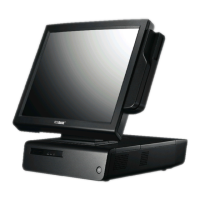What to do if MSR does not respond on POSBank SlimPOS?
- BburnsalisonJul 31, 2025
If the MSR (Magnetic Stripe Reader) on your POSBank Payment Terminal is not responding, check the connection of the main board to LCD cable. Also, verify the MSR board cable.

